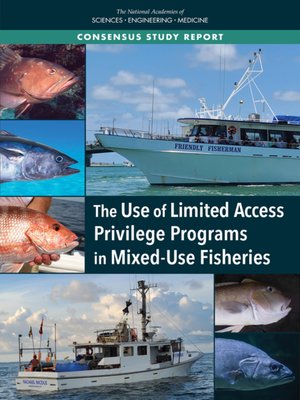The Use of Limited Access Privilege Programs in Mixed-Use Fisheries
ebook
By National Academies of Sciences, Engineering, and Medicine

Sign up to save your library
With an OverDrive account, you can save your favorite libraries for at-a-glance information about availability. Find out more about OverDrive accounts.
Find this title in Libby, the library reading app by OverDrive.



Search for a digital library with this title
Title found at these libraries:
| Library Name | Distance |
|---|---|
| Loading... |
A central goal of U.S. fisheries management is to control the exploitation of fish populations so that fisheries remain biologically productive, economically valuable, and socially equitable. Although the Magnuson-Stevens Fishery Conservation and Management Act led to many improvements, a number of fish populations remained overfished and some fisheries were considered economically inefficient. In response, Congress amended the Act in 2006 to allow additional management approaches, including Limited Access Privilege Programs (LAPPs) in which individuals receive a permit to harvest a defined portion of the total allowable catch for a particular fish stock.
This report examines the impacts of LAPPs on mixed-use fisheries, defined as fisheries where recreational, charter, and commercial fishing sectors target the same species or stocks. The report offers recommendations for NOAA's National Marine Fisheries Service (NMFS) and the Regional Fishery Management Councils (the Councils) who oversee and manage federally regulated fisheries. For each of the five mixed-use fisheries included in the report, the committee examined available fisheries data and analyses and collected testimony from fishery participants, relevant Councils, and NMFS regional experts through a series of public meetings.







